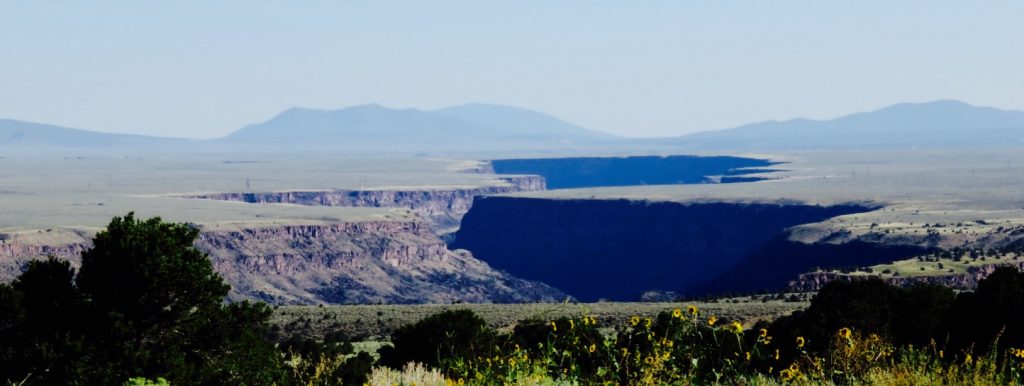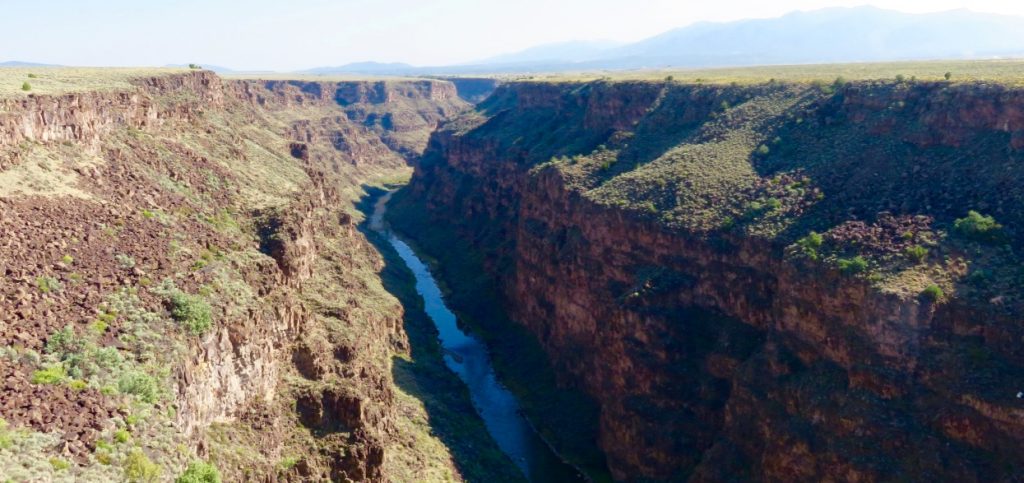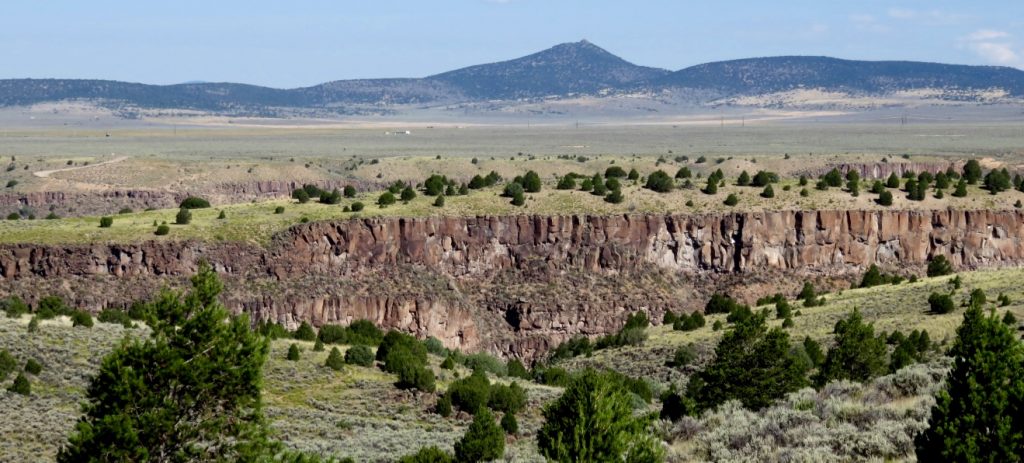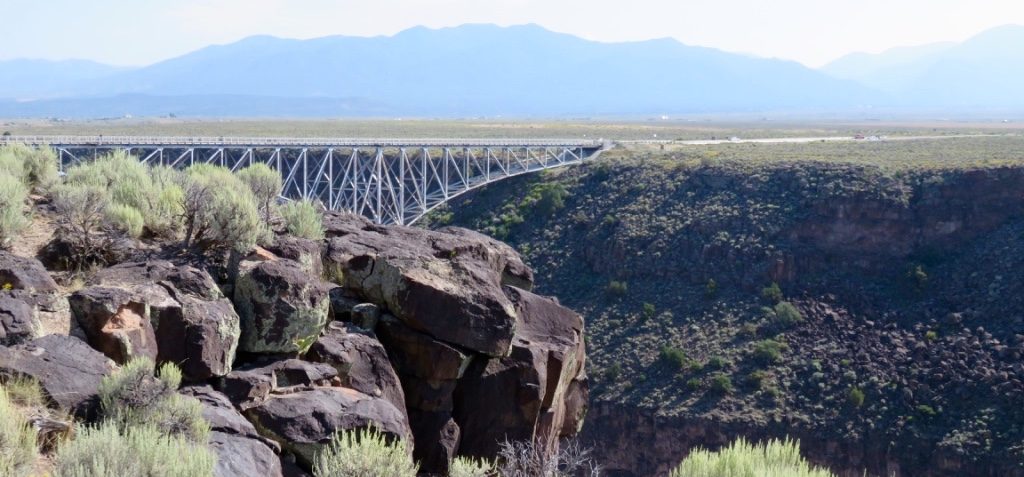Rio Grande Gorge Bridge
Known by the locals as simply the “Gorge Bridge” or “High Bridge,” the three-span steel continuous-deck-truss structure with a concrete-filled steel grid deck, is a high-arch bridge that spans the Rio Grande Gorge. Many sources have the bridge ranging in height from 600 to 700 feet above the gorge floor, but its true height is 565 feet. It is the seventh highest in the United States and eighty-second highest in the world. The foot span is 600 feet, and it was built between 1963 and 1965.
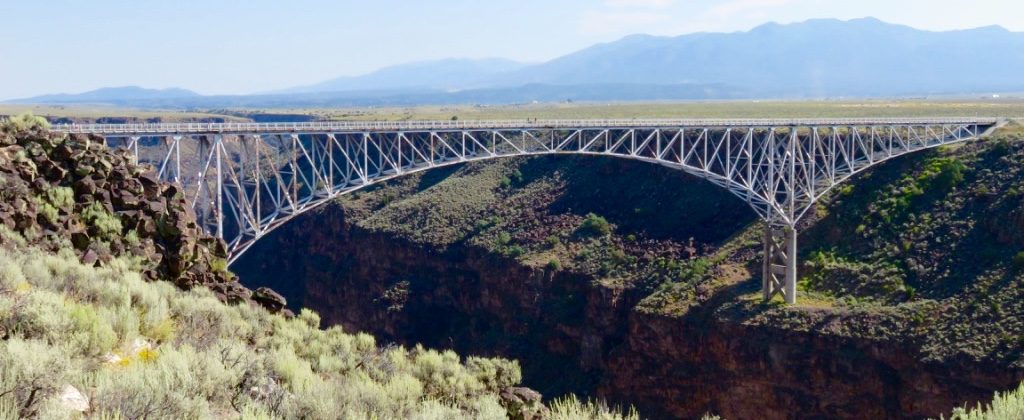
Rio Grande Bridge over the Rio Grande Gorge
The bridge has several platforms that cantilever out over the gorge, allowing pedestrians to stand several feet into space while capturing breathtaking views of the river below. If you are squeamish about heights, you should skip these platforms. The bridge also has sidewalks on both sides and low railings to make you feel somewhat secure, but if you are not keen on heights period, then you won’t care for the undulating sensation beneath your feet as vehicle after vehicle, especially big rigs, crosses the bridge. Note there is nothing between you and an almost six-hundred-foot drop except a chest-high guardrail, which brings me to . . .
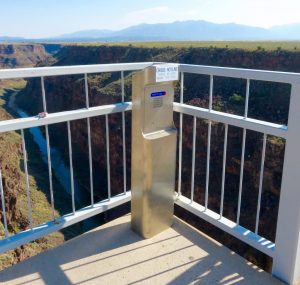 Unfortunately, the popularity of the bridge has also made it a suicide magnet. There have been more than 115 suicides in a twenty-year span, with the most recent occurring in the past two months. After years of inaction on suicide prevention, crisis phones were installed at the bridge in late 2014. The ten call boxes each bear a sign that reads, “There is hope. Make the call.” When a person presses the call button, he or she is connected to the New Mexico Crisis and Access Line in Albuquerque where counselors field the calls around the clock. Mental health advocates says it is a first step but not a prevention strategy unto itself. The New Mexico Department of Transportation is studying the feasibility of either raising the bridge railings or installing netting. The most famous example of crisis phones being installed (in 1993) was at the Golden Gate Bridge in San Francisco. In the fourteen years following their installation, 380 people leaped to their deaths from the landmark.
Unfortunately, the popularity of the bridge has also made it a suicide magnet. There have been more than 115 suicides in a twenty-year span, with the most recent occurring in the past two months. After years of inaction on suicide prevention, crisis phones were installed at the bridge in late 2014. The ten call boxes each bear a sign that reads, “There is hope. Make the call.” When a person presses the call button, he or she is connected to the New Mexico Crisis and Access Line in Albuquerque where counselors field the calls around the clock. Mental health advocates says it is a first step but not a prevention strategy unto itself. The New Mexico Department of Transportation is studying the feasibility of either raising the bridge railings or installing netting. The most famous example of crisis phones being installed (in 1993) was at the Golden Gate Bridge in San Francisco. In the fourteen years following their installation, 380 people leaped to their deaths from the landmark.
During a roadside chat—or call it a bridge-side chat—with a long-time Taoseño, he commented about the locals referring to the bridge as the “bridge to nowhere,” because while it was being built funding did not even exist to continue Highway 64 on the other side of the gorge. But by the time the bridge was dedicated in 1965, not only had funding been approved, but also US Route 64 was in operation as a major east-west highway.

After you walk the bridge and/or hike the state park area along the gorge, take a beverage break and enjoy the stunning views.


